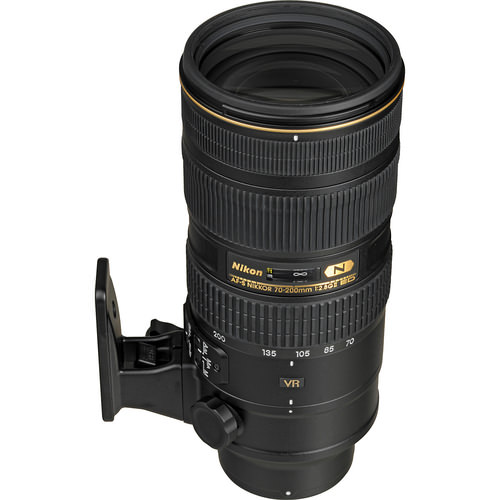 Many serious enthusiasts and professionals will tell you that the AF-S NIKKOR 70–200mm f/2.8G ED VR II zoom lens is the sharpest, least distorting, fastest and most accurately focusing Nikon telephoto lens in this category. They rely on it for low-light sports, fashion, portrait and many other types of photography. Although the 70–200mm is built with many features and capabilities, four of them attract the photographers who need this lens to excel at their craft and art.
Many serious enthusiasts and professionals will tell you that the AF-S NIKKOR 70–200mm f/2.8G ED VR II zoom lens is the sharpest, least distorting, fastest and most accurately focusing Nikon telephoto lens in this category. They rely on it for low-light sports, fashion, portrait and many other types of photography. Although the 70–200mm is built with many features and capabilities, four of them attract the photographers who need this lens to excel at their craft and art.
Check out reviews of the Nikon 70-200MM F2.8 HERE.
1. First among these is the substantially improved optics. The NIKKOR 70–200mm is capable of delivering sharp images both in the center of the frame and the corners. Seven ED (Extra-low Dispersion) glass elements make all the difference, minimizing aberrations. With an application of Nikon’s Nano-Crystal Coating, lens flare and ghosting are similar reduced to insignificance. Less light falloff is another benefit of making this the go-to lens for many shooting challenges. For FX-format camera users, image quality is equally enhanced with the optics in the 70–200mm. With these advances in optical technology, the people at Nikon are able to design and manufacture a shorter zoom lens, providing better handling and requiring less space in a camera bag.
2. Vibration reduction technology is another capability that pros insist must be included in a lens at this price point. Nikon has responded to their expectations with its latest advancement in vibration reduction, or VR II. The NIKKOR 70–200mm f/2.8 is a low-light magician. Shoot as many as four shutter speeds slower than without the VR II technology. Select the VR II’s normal mode for standard photography or the active mode that dampens vibrations even more when you are in motion, such as in a car or aircraft. You’ll see a more stable image through the viewfinder, which results in easier and more precise framing and focus-point execution.
Focus the 70–200mm in one of three modes: A/M, M/A and M. Choose A/M for auto-focus priority that is activated even as you operate the focus ring.
3. The Nikon 70–200mm f/2.8 wouldn’t be a pro’s zoom lens unless it could be focused relatively close. At 4.6 feet (1.4 meters), it outperforms its predecessor, which can’t focus any nearer than 5 feet (1.5 meters). This extra half-foot can make all the difference between an otherwise loosely framed image and one that brings the object/subject into stunning clarity and richness. Six inches is also often the difference between the amateur and the pro. He or she knows that a closer focus is critical to taking outstanding digital photos of products, food, models and other subject matter.
4. To spend the considerable amount of money to buy a Nikon 70–200mm f/2.8 zoom lens, serious enthusiasts and professionals want to see excellent control of distortion. Nikon has made sure this lens delivers, reducing the distortion of the earlier 70–200mm models by approximately half. It’s common for zoom lenses to reveal barrel distortion at the shorter end of the focal range and pincushion distortion at the longer end. Barrel distortion is essentially non-existent in the new 70–200mm f/2.8; and what little pincushioning can be seen doesn’t appear until 135mm.
Amazon has the Nikon AF-S NIKKOR 70–200mm f/2.8G ED VR II zoom lens HERE---->http://www.amazon.com/dp/B002JCSV8U/?tag=photocominc-20
Your feedback is important to thousands of PhotographyTalk.com fans and us. If this article is helpful, then please click the Like and Re-Tweet buttons at the top left of this article.
